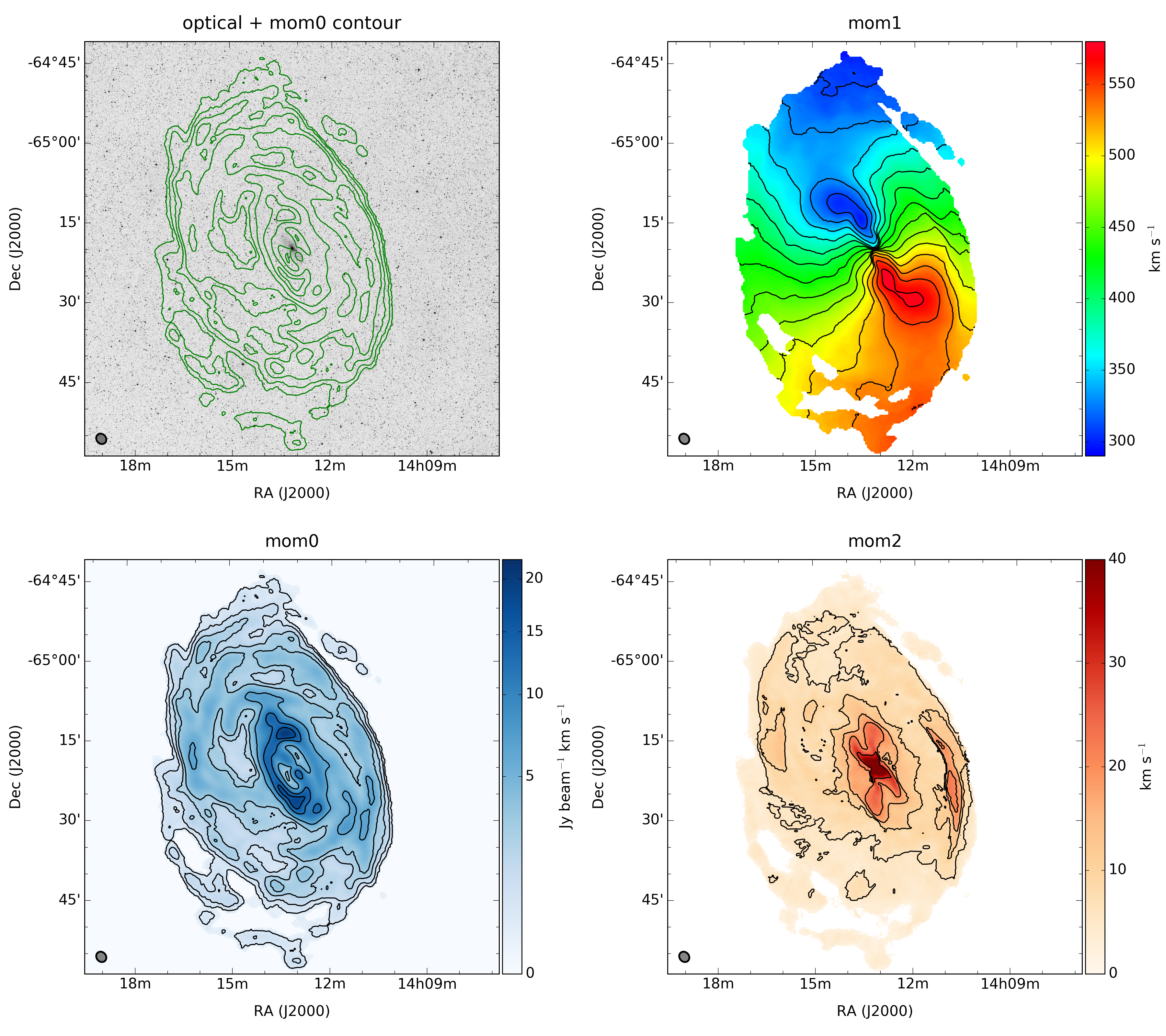Circinus Galaxy

Circinus Galaxy
(HIPASS J1413-65) is a highly obscured, late-type spiral galaxy with
a very large, warped HI disc (Freeman et al. 1977; Jones et al. 1999; Curran
et al. 2008; For, Koribalski & Jarrett 2012). It is located behind the
Galactic Plane (at l,b = 311.3 degr, -3.8 degr), which makes it difficult to
study its optical properties and large-scale environment due to high stellar
density and dust extinction (AB = 5.3 mag, Schlafly & Finkbeiner
2011). For the same reason, the distance to Circinus is still rather uncertain.
Based on a variety of methods, Freeman et al. (1977) derived an approximate
distance of 4.2 ± 0.8 Mpc, which we adopt here. Karachentsev et al.
(2007) estimated DTF = 2.82 ± 0.28 Mpc using 2MASS infrared
magnitudes, while Karachentsev et al. (2013) give DTF = 4.2 Mpc.
Freeman et al. (1977) determine de Vaucouleurs (B24.5)
and Holmberg (B26.6) optical diameters for the Circinus
Galaxy of 11.9 arcmin and 17.2 arcmin, respectively, after extinction
correction (their Table 3) as well as PA = 210 degr and i = 65 degr. They
give LB = 7.2 × 109 Lsun.
Using our ATCA HI mosaic
we find an enormous HI envelope for the Circinus Galaxy, extending over
60 arcmin (at the outermost HI contour), well beyond the optical Holmberg
radius. We measure an DHI = 48.7 arcmin at 1 M☉
pc-2. Its large HI extent was also noted in the HI surveys of the
Zone of Avoidance (HIZOA, Juraszek et al. 2000, Staveley-Smith et al. 2016)
and in HIPASS (Koribalski et al. 2004). The ATCA HI distribution and mean HI
velocity field of the Circinus galaxy, obtained with a 12-pointing mosaic in
the 375-m configuration, show its large-scale warped HI disc.
For, Koribalski & Jarrett (2012) analyse high-resolution Spitzer mid-infrared
images of the Circinus Galaxy and compare with Parkes and ATCA HI data. They
derive star formation rates and analyse the local star formation conditions.
The ionized gas in Circinus was studied by Elmouttie et al. (1998a) via
Fabry-Perot Hα imaging. No GALEX UV images are available yet.
Circinus also hosts bipolar radio lobes extending perpendicular to the inner
disc (Elmouttie et al. 1998b, Wilson et al. 2011).
The large HI discs of
Circinus and M 83 are typical for their HI mass (see Wang et al. 2016)
and allow us to obtain accurate rotation curves out to radii of ~50 kpc.
Using 3D FAT Kamphuis et al. (2015) obtain an HI rotation curve indicating
vrot = 161.4 km/s at Rmax = 47.2 kpc (for i = 62.2 degr
and PA = 199.6 degr) and Mdyn = 2.9 × 1011
M☉.
Reference:
Koribalski et al. 2018
* LVHIS database
* LVHIS homepage
* next